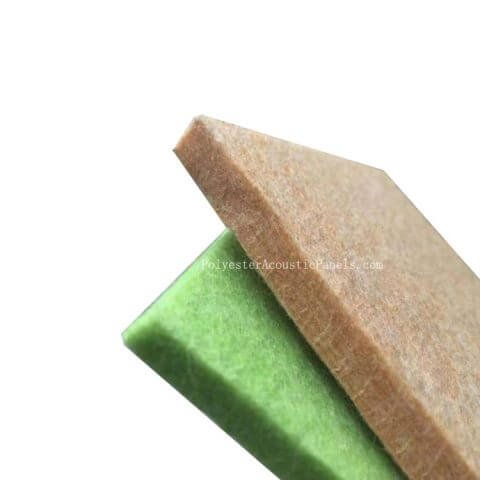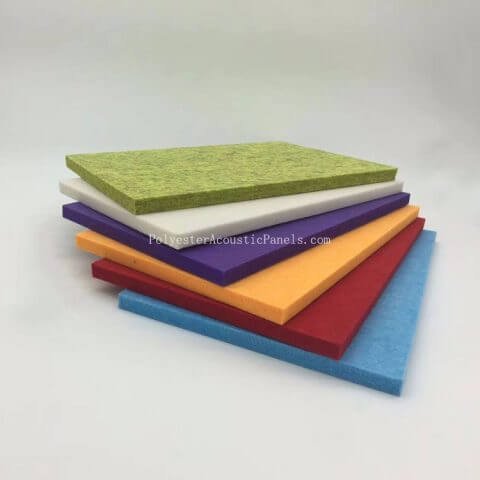I. Introduction
Theater rooms are intended to provide audiences with an engaging and memorable experience, yet achieving optimal sound quality in these spaces can be challenging due to echo and reverberation issues. That is where theater acoustic panels come into play – these specially-made panels were specifically created to address such acoustic concerns in theater rooms, enhancing overall audio experience in these environments.

II. Understanding Echo and Reverberation
Before delving into the role of theater acoustic panel, it’s essential to gain an understanding of echo and reverberation, as these factors can impact on sound quality in a cinema room.
Echo refers to the reflection of sound waves off surfaces, leading to repeated sounds being produced. When sound waves bounce off walls, floors, or ceilings they may generate multiple reflections which reach our ears at different times; this delayed repetition of sound can distort its original audio file making it hard for us to perceive speech, music or other sounds clearly.
Reverberation, on the other hand, refers to the persistency of sound in an enclosed space after its source has stopped emitting it; caused by multiple reflections of sound waves off various surfaces. Reverberation can result in prolonged decay of sound waves which produce an audible echo; creating an audible and confusing tone which impairs intelligibility and clarity of audio output.
Excessive echo and reverberation in a theater room can have a serious impact on audience experience, from dialogues becoming inaudible to music losing its richness – in short, all audio quality may suffer as a result. Theatre acoustic boards play a pivotal role in combatting these issues by decreasing echo and reverberation levels for an immersive theatre experience.

III. The Role of Theater Acoustic Panels
Acoustic theater panels are specifically designed to address the issues caused by echo and reverberation in cinema rooms, acting as an effective solution. These theater wall panels play an essential role in controlling these acoustic issues and, ultimately, improving sound quality overall. Here is how theater room acoustic panels help foster an ideal acoustic environment:
Echo Reduction
Acoustic panels in theater rooms are engineered to absorb soundwaves, minimizing their reflection off surfaces. By placing strategically-placed theater panels around walls, ceilings, or floors strategically-they effectively reduce echo in a theater room and contribute towards providing more balanced audio experiences.
Reverberation Control
Theater room sound panels also help control reverberation by absorbing sound energy, helping reduce its protracted decay in the room. This ensures that sound remains clear and intelligible so audiences can fully immerse themselves in performances without interference from murky audio.
Sound Diffusion
Theater sound panels can also provide sound diffusion, creating a more enveloping and immersive audio experience in theater rooms. Sound waves are scattered in various directions by these panels to prevent direct reverberation, helping create an enhanced auditory experience overall.

IV. Benefits of Utilizing Theater Acoustic Panels
Utilizing sound absorption theater panel can bring numerous advantages that enhance your audio experience in the theater room, including:
Enhanced Sound Clarity
By eliminating echo and controlling reverberation, theater acoustic panels significantly enhance sound clarity, making dialogues easier to comprehend and every subtle nuance preserved allowing audiences to truly appreciate every performance detail.
Enhanced Speech Intelligibility
Theatre rooms require intelligible speech for theatrical performances and presentations, making theater acoustic panels essential to ensure every word spoken onstage can easily be understood by its audience. Theater acoustic panels help minimize distortion caused by echo and reverberation so every spoken word onstage can be readily comprehended by all who witness it.
Better Overall Acoustic Performance
Utilizing polyester theatre panels can contribute to an overall improved acoustic experience within the theater room, creating an ideal balanced and controlled acoustic environment, optimizing sound quality and making audio more captivating, dynamic, and enjoyable for its audiences.
Stay tuned! In our next segment of this article, we will examine various types of theater soundproofing panels available as well as installation and placement considerations for them.

V. Differences Among Theater Acoustic Panels
When it comes to acoustic panels for theater room, there are various options available to suit different preferences and requirements. Here is an overview of some commonly used theater acoustic panels:
- Polyester Acoustic Panels: Polyester acoustic panels are an attractive choice for theater rooms. Crafted from densely packed polyester fibers, theater room wall panels offer superior sound absorption properties to reduce echo and reverberation in theater rooms. Polyester panels come in various thicknesses and colors for customization purposes to meet the aesthetics of each theater room.
- Fiber Acoustic Panels: Fiber acoustic panels are another popular choice for theater applications, usually constructed out of mineral wool or fiberglass for their sound-absorbent capabilities. Various sizes and shapes of fiber acoustic panels offer design flexibility during installation and design process.
- Other Materials: Theater acoustic panels can also be constructed out of other materials like foam, wood and metal that each offer unique characteristics for sound absorption, providing different aesthetic and acoustic solutions.
When choosing theater acoustic wall panels, it’s essential to consider factors like desired sound absorption performance, aesthetic preferences and budget constraints when making your selection. Consulting acoustic experts or manufacturers can assist in finding suitable panels for your individual theater room needs.

VI. Installation and Placement Considerations
Proper installation and placement of theater acoustic panels are critical to their maximum effectiveness, so here are some guidelines and tips that will ensure optimal installation:
- Wall Coverage: When designing your theater room, aim to cover most or all walls with acoustic panels in order to reduce sound reflections and maximize acoustic performance. Put panels along both side walls and rear walls as well as any large reflective surfaces such as mirrors.
- Ceiling Treatment: When installing acoustic panels to the ceiling, install them to further control echo and reverberation, especially in rooms with high ceilings or where sound tends to reflect off of its surface. This approach may prove especially helpful when applied in rooms with higher ceilings where sound bounces off the surfaces directly overhead.
- Strategic Placement: Pay close attention to the placement of acoustic panels strategically. Consider where your audience will be sitting, and treat areas which have the biggest direct effect on sound reflection. Placing panels near first reflection points, where sound waves bounce off surfaces before reaching listener ears, can be particularly effective at decreasing unwanted reflections.
- Spacing and Density: For maximum effectiveness of the acoustic panels, ensure they have the appropriate spacing and density. Large gaps between panels allow sound waves to pass through and reduce their effectiveness; overcrowded panels could lead to overabsorption or dulled sound waves – finding an optimal balance is key here.
- Consider Corner Bass Traps: When it comes to theater rooms, low-frequency sound buildup can become an issue. Consider installing corner bass traps – which are specially-made acoustic panels designed to absorb low-frequency energy accumulated in room corners – in order to achieve more balanced and controlled bass response.
- Installation Options: Depending on the complexity and your level of expertise, professional installation of black theater acoustic panels might be preferable; their expertise will ensure precise placement and optimal performance; but an alternative method such as DIY can often prove cost-effective and easier.
As every cinema room is different, installation and placement considerations may vary accordingly. Therefore, it’s always advantageous to seek advice from professional acousticians or manufacturers with regards to your specific room dimensions and needs.
In the following part of this article, we will provide maintenance and care tips for theater acoustic panels as well as explore their importance in creating an ideal acoustic environment within cinema rooms.

Decorative Acoustic Wall Panels
Decorative Acoustic Wall Panels Shape Design Acoustic Sound Absorbing Wall Panels
VII. Care and Maintenance
To extend the longevity and performance of theater panels for walls, proper maintenance and care practices must be implemented. Here are a few recommendations:
Regular Dusting
Over time, dust can build up on acoustic panels and negatively affect their performance. To preserve their effectiveness and prevent buildup that might impede sound absorption, dust the panels on an ongoing basis with either a soft brush or vacuum cleaner with brush attachments. This helps maintain effectiveness and ensure maximum sound absorption capabilities.
Avoid Moisture Exposure
Theater acoustic panels are intended for indoor use and must be kept away from excessive moisture, including humidity or condensation, which could lead to mold growth or deterioration. Should they become damp, allow them to air-dry before re-installation.
Prevent Physical Damage
Take steps to safeguard the panels and avoid physical harm during installation or any necessary adjustments, including sharp objects or excessive force that could puncture or tear their surface. Handle them carefully during this process for optimal results.
Monitor Wear and Tear
Regularly inspect panels for signs of wear and tear, such as loose edges or damaged surfaces that indicate any type of deterioration. If any issues are identified, repair or replace affected panels in order to maintain optimal acoustic performance.

Polyester Acoustic Panel 9 mm
Polyester Acoustic Panel 9 mm Thick Polyester Acoustic Panel Technical Data Sheet

Polyester Fibre Acoustic Panel
Polyester Fibre Acoustic Panel 9Mm Polyester Fibre Acoustical Panels Fitting
VIII. Conclusion
Theater acoustic panels play a critical role in minimizing echo and reverberation for an optimal audio experience in theater rooms. By absorbing sound waves and controlling reflections, these panels improve sound clarity, speech intelligibility, and overall acoustic performance for improved acoustic performance.
No matter your theater acoustic panel requirements and preferences, choosing polyester acoustic panels, fiber acoustic panels or other materials depends entirely on them. Proper installation and positioning will maximize their effectiveness in reducing echo and reverberation.
Maintain and care for the panels regularly to extend their longevity and reap their many advantages. By following simple maintenance practices, you can protect their performance and continue enjoying all their advantages.
If you want an immersive theater experience with balanced and clear sound, consider including theater acoustic materials in your interior home theater room. Their impact in reducing echo and reverberation will allow you to fully appreciate the audio quality of movies, performances, or presentations.
Investment in PET felt acoustic panel for theater is an effective way to create the optimal acoustic environment in your cinema room, so why wait? Increase audio experience and transform your theater space into an oasis of exceptional sound quality!






